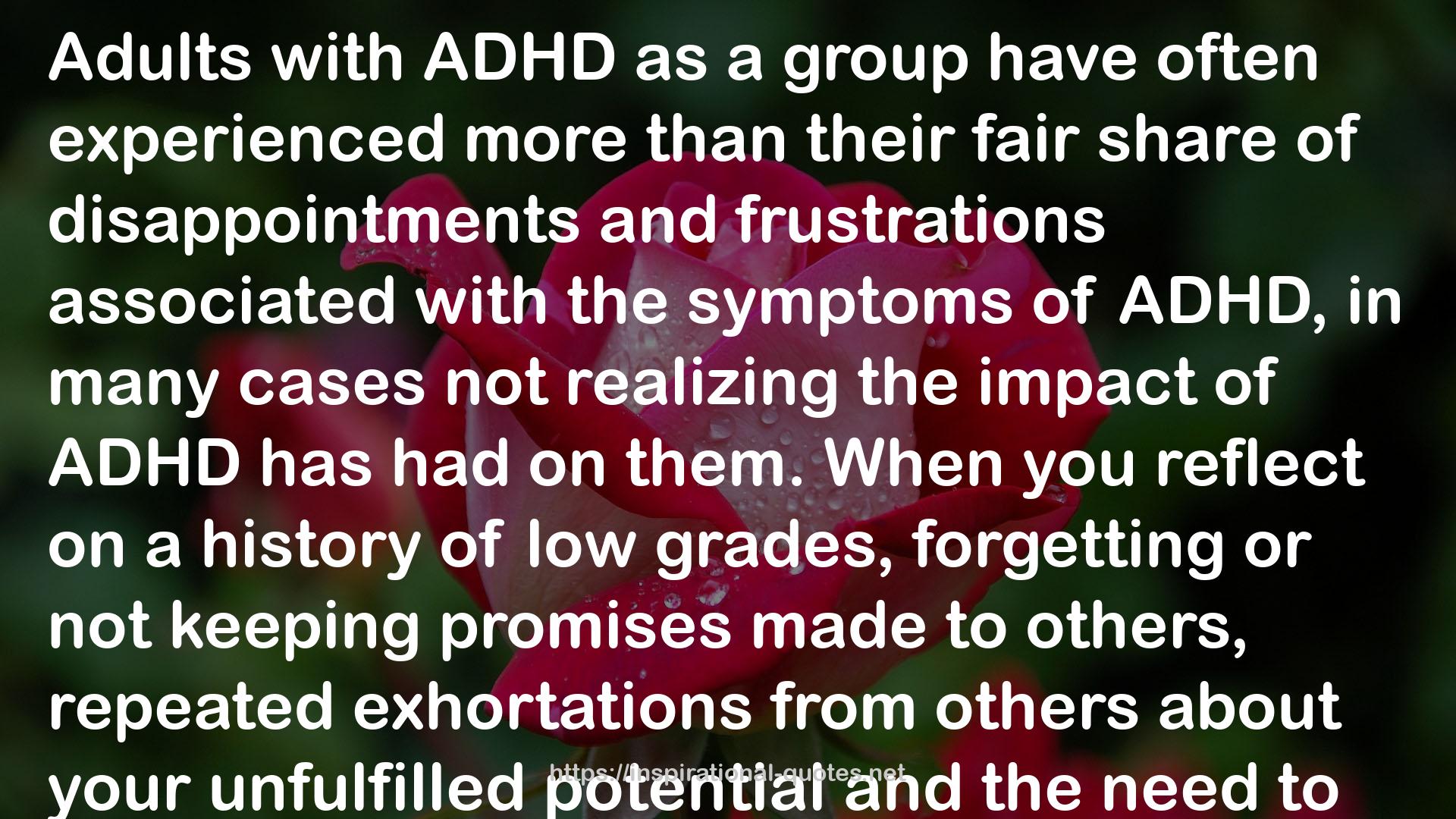" Adults with ADHD as a group have often experienced more than their fair share of disappointments and frustrations associated with the symptoms of ADHD, in many cases not realizing the impact of ADHD has had on them. When you reflect on a history of low grades, forgetting or not keeping promises made to others, repeated exhortations from others about your unfulfilled potential and the need to work harder, you may be left with a self-view that “I’m not good enough,” “I’m lazy,” or “I cannot expect much from myself and neither can anyone else.” The end result of these repeated frustrations can be the erosion of your sense of self, what is often called low self-esteem.
These deep-seated, enduring self-views, or “core beliefs” about who you are can be thought of as a lens through which you see yourself, the world, and your place in the world. Adverse developmental experiences associated with ADHD may unfairly color your lens and result in a skewed pessimistic view of yourself, at least in some situations. When facing situations in the here-and-now that activate these negative beliefs, you experience strong emotions, negative thoughts, and a propensity to fall into self-defeating behaviors, most often resignation and escape. These core beliefs might only be activated in limited, specific situations for some people with ADHD; in other cases, these beliefs color one’s perception in most situations. It should be noted that many adults with ADHD, despite feeling flummoxed by their symptoms in many situations, possess a healthy self-view, though there may be many situations that briefly shake their confidence.
These core beliefs or “schema” develop over the course of time from childhood through adulthood and reflect our efforts to figure out the “rules for life” (Beck, 1976; Young & Klosko, 1994). They can be thought of as mental categories that let us impose order on the world and make sense of it. Thus, as we grow up and face different situations, people, and challenges, we make sense of our situations and relationships and learn the rubrics for how the world works.
The capacity to form schemas and to organize experience in this way is very adaptive. For the most part, these processes help us figure out, adapt to, and navigate through different situations encountered in life. In some cases, people develop beliefs and strategies that help them get through unusually difficult life circumstances, what are sometimes called survival strategies. These old strategies may be left behind as people settle into new, healthier settings and adopt and rely on “healthy rules.” In other cases, however, maladaptive beliefs persist, are not adjusted by later experiences (or difficult circumstances persist), and these schema interfere with efforts to thrive in adulthood.
In our work with ADHD adults, particularly for those who were undiagnosed in childhood, we have heard accounts of negative labels or hurtful attributions affixed to past problems that become internalized, toughened, and have had a lasting impact. In many cases, however, many ADHD adults report that they arrived at negative conclusions about themselves based on their experiences (e.g., “None of my friends had to go to summer school.”). Negative schema may lay dormant, akin to a hibernating bear, but are easily reactivated in adulthood when facing similar gaffes or difficulties, including when there is even a hint of possible disappointment or failure. The function of these beliefs is self-protective—shock me once, shame on you; shock me twice, shame on me. However, these maladaptive beliefs insidiously trigger self-defeating behaviors that represent an attempt to cope with situations, but that end up worsening the problem and thereby strengthening the negative belief in a vicious, self-fulfilling cycle. Returning to the invisible fences metaphor, these beliefs keep you stuck in a yard that is too confining in order to avoid possible “shocks. "
― , The Adult ADHD Tool Kit: Using CBT to Facilitate Coping Inside and Out
